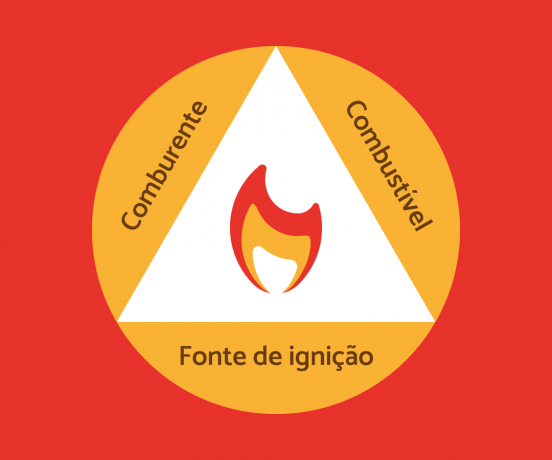Combustion is a chemical oxidation reaction that takes place between two substances, which generates heat as a form of energy release. The substances involved in combustion are fuel and oxidizer.
Combustion (or burning) is a very common phenomenon in our daily lives: a lighted candle, working cooking gas, a lighter and the burning of fuel in a car are examples of combustion.
The two types of combustion
Combustion can be of two types: complete or incomplete. They look alike and start in the same way, the difference between them is the final product, which results from combustion.
1. Complete combustion
Combustion is called complete when there is the necessary amount of oxygen to consume the fuel to the end. In this process, carbon dioxide (CO2) and Water (H2O).
In a complete combustion the color of the fire flame is more bluish.
Examples
- Complete combustion of methane (CH4 + O2 → CO2 + H2O)
- Complete combustion of butane (C4H10 + O2 → CO2 + H2O)
2. Incomplete combustion
Incomplete combustion happens when the fuel is not consumed all the way because there is not enough oxygen to do so.
When combustion is incomplete, carbon monoxide (CO), carbon dioxide (CO2), Water (H2O) and soot (remnants of incomplete combustion).
Examples
- Incomplete combustion of methane (CH4 + O2 → C + 2H2O)
- Incomplete combustion of butane (C4H10 +502 → 8C + 10H2O)
In incomplete combustion the flame color is different, more yellowish.
Summary of differences between complete and incomplete combustion
| Complete combustion | Incomplete combustion | |
|---|---|---|
| fuel consumption | Fully consumed. | It is not fully consumed. |
| amount of oxygen | Enough to burn all the fuel. | Not enough to burn all the fuel. |
| Product | Carbon dioxide and water. | carbon dioxide, carbon monoxide, water and soot. |
| flame color | Bluish. | Yellowish. |
How does combustion take place?
Combustion only happens when these three factors are present: fuel, oxidizer and ignition source. The union between these three elements of combustion is called a fire triangle or combustion tripod.
1. Fuel
It is the substance that causes combustion to start. They are flammable elements, which burn and can be of all types: solid, liquid or gaseous.
Examples: wood, paper, alcohol, gasoline, cooking gas, ethanol, methane and butane.
2. oxidizing
It is the substance that increases the intensity of combustion, with oxygen being the most common oxidizer. The oxidizer is responsible for the duration and spread of the fire.
3. ignition source
The ignition source is the element that initiates combustion, which provides the first heat (energy) that starts the process. A match or any other element that generates a spark can be an ignition source.
The existence of a fuel and an oxidizer together with an ignition source that provides energy causes combustion to take place. together they make the combustion reaction, a chemical reaction that generates heat to the environment where combustion takes place.
 The fire triangle represents the elements necessary for the combustion process to take place.
The fire triangle represents the elements necessary for the combustion process to take place.
When combustion takes place, the fuel is the element that is oxidized, the oxidizer undergoes the oxidation process and the ignition source gives energy to start combustion.
In short, combustion is a chemical reaction between a fuel and an oxidizer and the result of this process is the production of heat.
What is the enthalpy of combustion?
The enthalpy of combustion represents the variation of energy that is released during combustion. It is measured by the amount of heat released from burning 1 mole of a substance. Mol is a measure of magnitude used for substances.
For the enthalpy to be measured, the reagents must be in these conditions:
- 25 degrees of temperature.
- 1 atm of pressure.
The enthalpy value (ΔH) is found by the following formula: ΔH = Hp - Hr (Hp is the value of the enthalpy of the products and Hr is the enthalpy of the reactants).
As combustion is an exothermic (energy release) reaction, its value must always be negative.
Also read the meanings of fire and oxidation.
